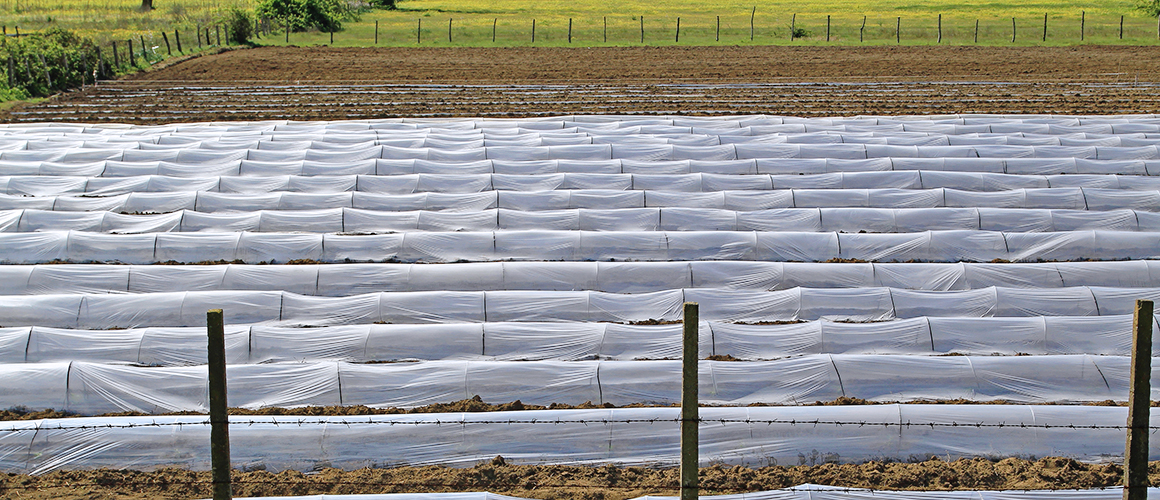An investigation of low-cost protective cropping
31 March 2019
Spray application workshop for Victorian growers
1 April 2019The Australian vegetable industry faces many challenges, and the increasing variability of our climate is a massive influence on growers’ productivity and profitability.
Heat waves, heavy rain, unseasonal frosts, hail and other extreme weather events can reduce crop quality at the very least, and even result in total crop write-off in severe situations. Such events threaten the viability of vegetable farms and impact supply to customers and consumers, creating issues throughout the supply chain.
Technological solutions, such as high-tech greenhouses, can provide a level of control and certainty. However, the expense of such structures is not justified by returns for many vegetable crops, which can be relatively low-value, space-consuming, or simply not suited to full protective cultivation.
Low-cost protected cropping offers a compromise between the cost of high technology and the need to provide some protection to crops from adverse conditions. A recent industry-funded project, funded through a strategic levy investment by Hort Innovation and delivered by Applied Horticultural Research, has reviewed and trialled different protected cropping options to help Australian growers understand and take advantage of the benefits they could offer.
The project team’s initial review of the options identified shade structures, wind-breaks and floating row covers as the most potentially effective options for vegetable growers. These options were subsequently trialed in a large number of growing sites around Australia, with some key findings coming out of this in-field research:
- Permanent shade houses and nets can provide full protection from events such as a hailstorm, but were unable to withstand cyclonic conditions, and did not greatly reduce crop temperatures when used as a top-only system.
- Capsicum plants grown in a proprietary retractable-roof house were significantly larger and healthier than similar plants grown outside, and would be expected to have greatly increased yield over an extended cropping period.
- Using floating row covers for summer production of leafy greens demonstrated a number of potential issues with such systems, including the difficulty of weed and pest control.
- Floating row covers were very promising in alleviating the effects of extreme heat and cold in baby-leaf spinach crops.
- Under cold conditions, ‘fleece’ floating row covers can significantly improve germination and growth and protect crops from light frosts, with harvest of lettuce being brought forward by 1-2 weeks.
- Capsicum plants grown under floating row covers had improved yield and better fruit quality. These covers enhanced plant growth, prevented sunburn and reduced temperatures around the plants during hot weather, and also proved effective at excluding Queensland fruit fly.
The full final report from this project is now available on the InfoVeg database. You can access it here.
This post appeared in the AUSVEG Weekly Update published 2 April 2019. Subscribe to the Update using our online form to receive the latest industry news in your inbox every week!


